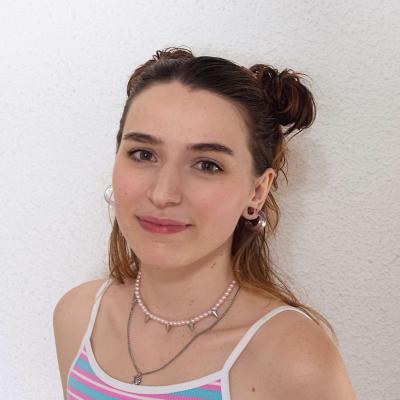Apolline offers teaching that responds to the student's desires and objectives, whether it be discovery, recreational or pre-professional. We accompany each student as closely as possible to his or her needs, allowing the student to unleash all his or her creativity, thus developing his or her motivation to the maximum.
Enrolment is possible at any time of the year, whether you are an inexperienced student or an experienced artist!
Individual Program
Our classes are designed for students of different levels. The courses are designed to create a real synergy while offering personalised support.
The student starts with a simple project, which will allow to lay the foundations, while determining the desires and needs, according to the current level. Thereafter, he is accompanied in the creation of much more complete and personal projects. He or she will perfect his or her technique and, if desired, develop scenarios or concentrate on pure illustration work. The class focuses on different techniques and artistic trends, opening the student's mind to the different possibilities that are open to him: Manga, Belgian comics, comic books, realistic drawing or his own creativity.
Objectives and skills
The classes for younger children, from 6 to 9 years old, are based on a playful approach, prioritising play and thus the child's pleasure. Not all the technical themes listed below are therefore developed. When they are, the form is adapted to their age.
Techniques covered
- Human anatomy - The body, the face, emotions, proportions
- Non-human anatomy - Animals and imaginary characters
- Static and moving bodies
- Set design - Environment and perspective work
- Objects and props
- Character creation - Character design
- Colour, light and shading
- Construction of a scenario, division of the boxes in relation to the text
- The work of the "bubbles" or phylactery
Such a comprehensive project allows the student to learn many drawing skills (proportion, perspective, light, etc.) while being free to choose the technique used (pencils, felt pens, gouache, watercolour, ink, digital). Thus, the student works on the development of his personal style.
Ages :
- from 8 years old - 90' weekly
- from 10 years old - Advanced - 90' weekly
- Adults 15+ years old - 120' weekly
Prices
| Courses | Weekly duration | Monthly price* | One price** |
| Comic strip/Manga from age 8 / 10 - 1 year | 90 minutes |
99.00 CHF |
1'150.00 CHF |
| Drawing Comics/Manga Adults aged 15 and over - 1 term (quarter) | 120 minutes | N/A | 550.00 CHF |
* 12 monthly instalments to be paid from September to August (see our règlement).
** Price for full-year course payment in a single instalment
All fees are included in the prices shown. Enrolment during the term is possible (price calculated on a pro rata basis according to the number of lessons remaining).
Registration by term (quarter) is only possible for adult courses.











